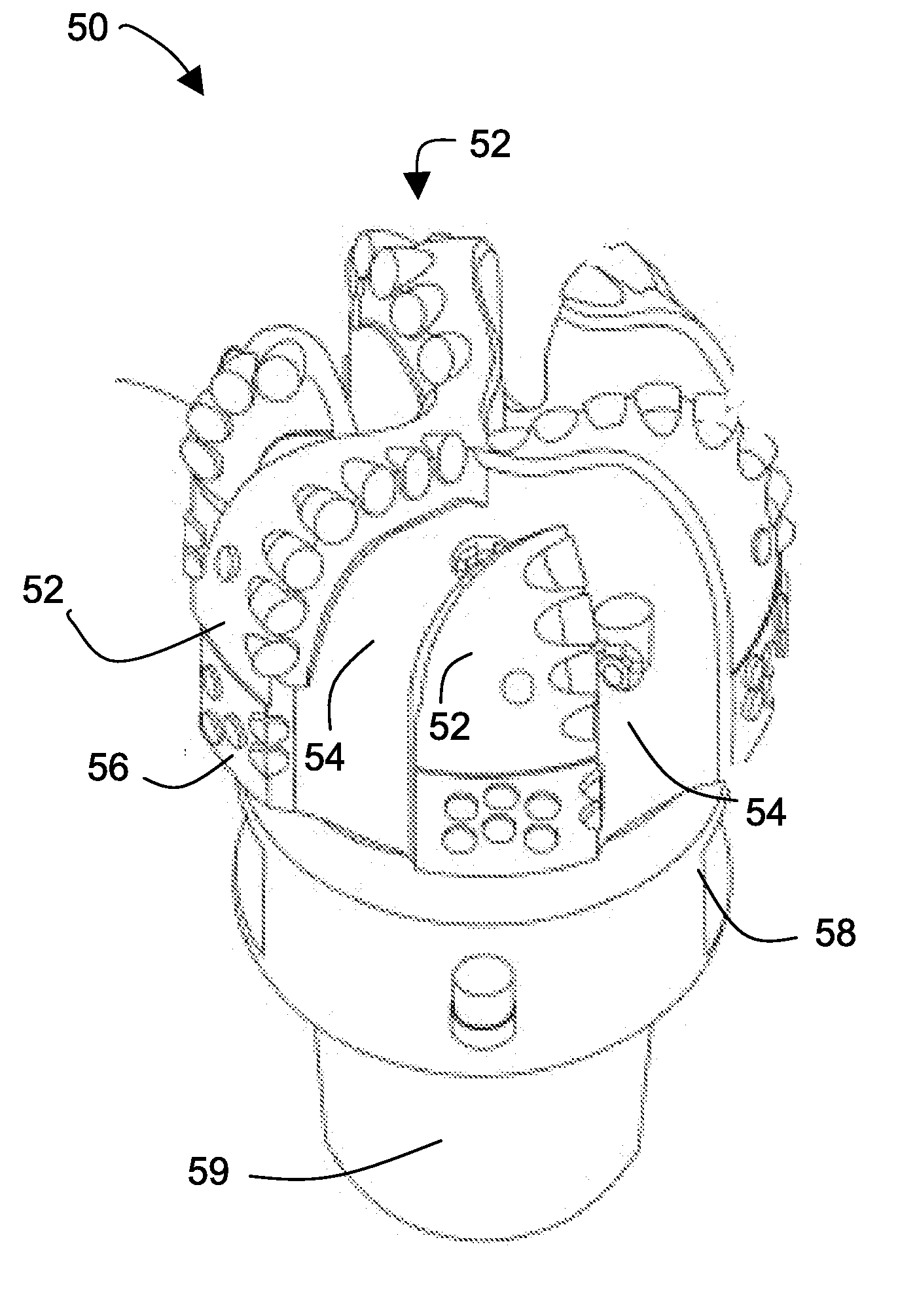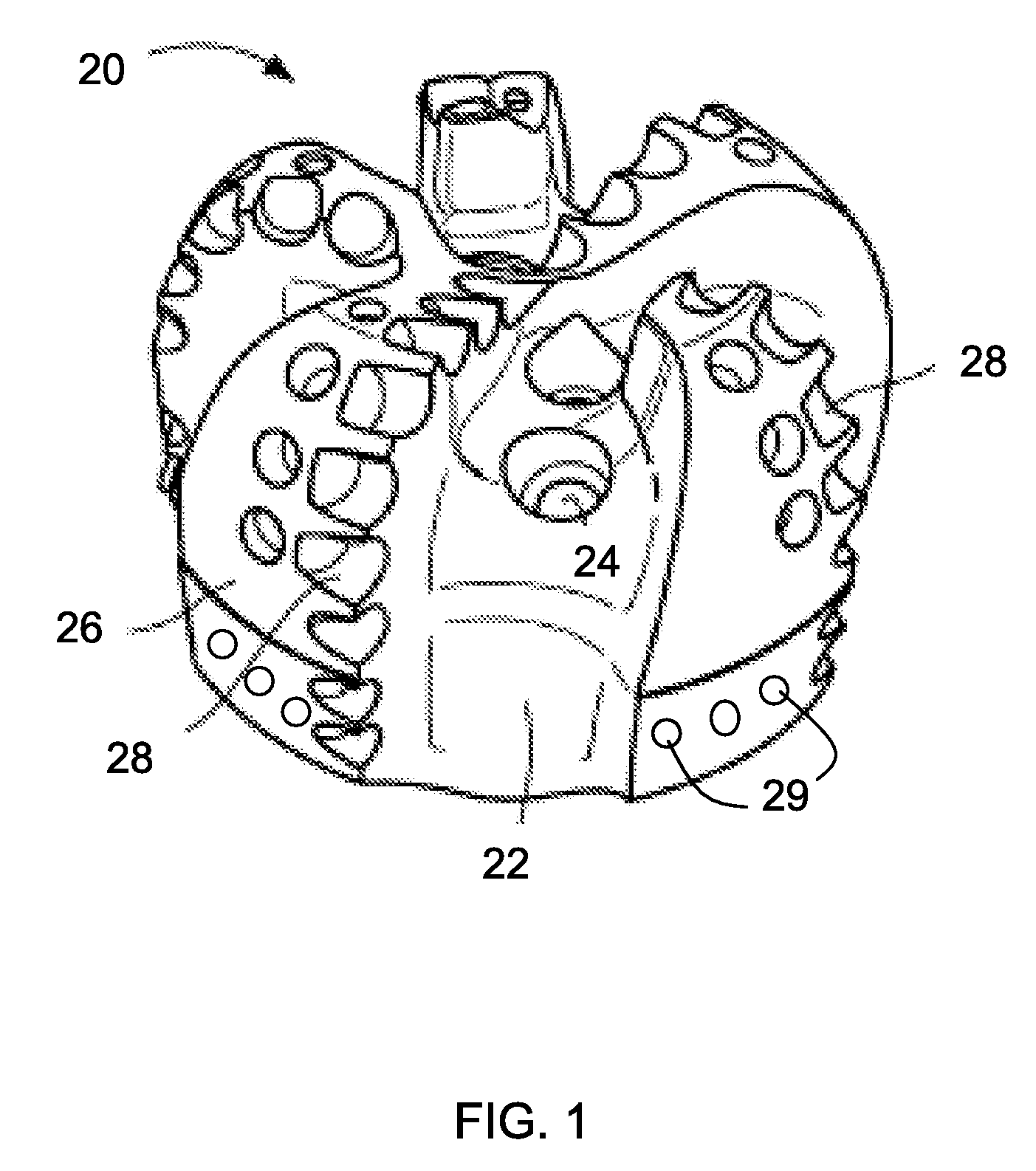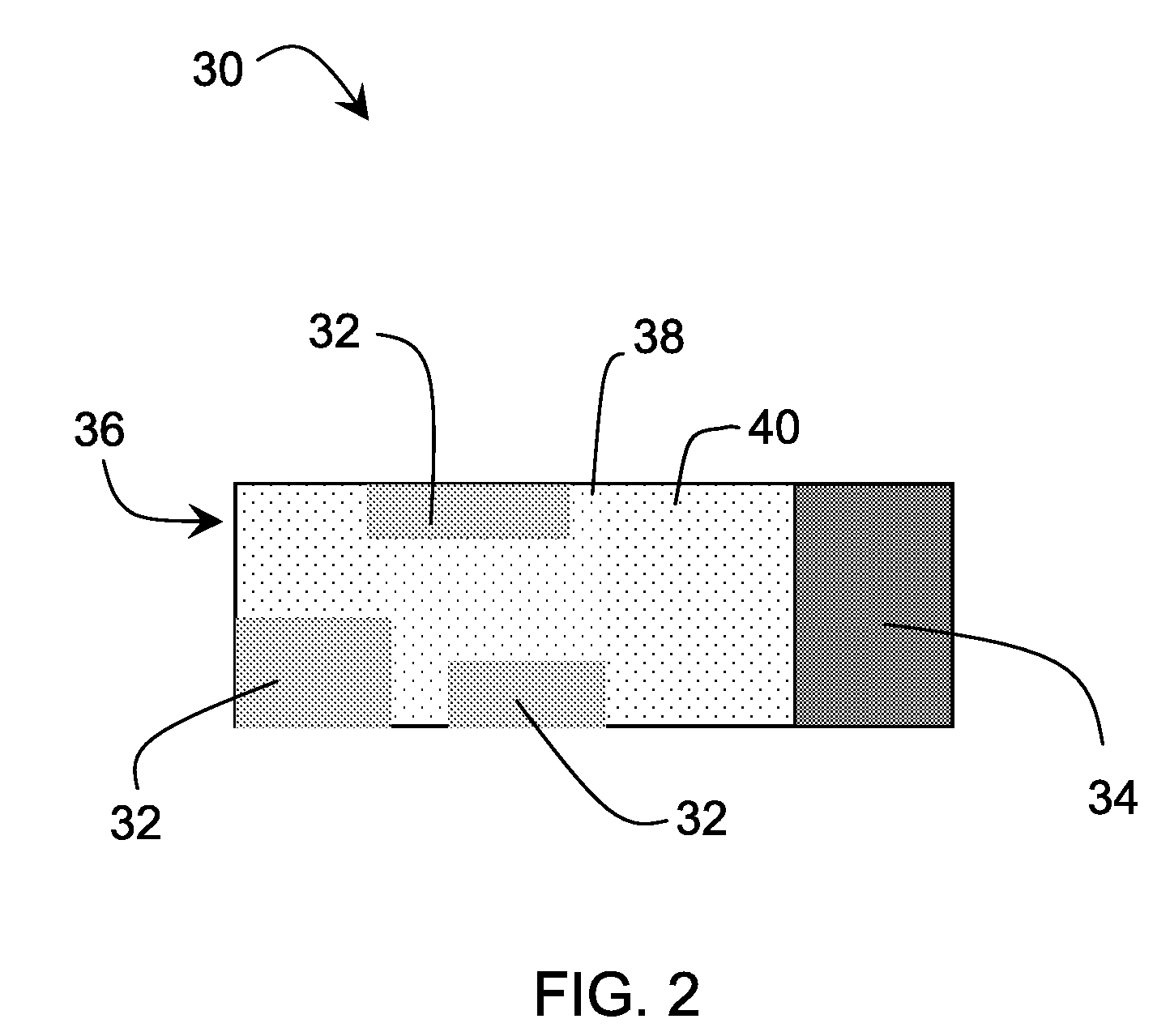Earth-boring bits and other parts including cemented carbide
a technology of cemented carbide and earth-boring bits, which is applied in the direction of earth-boring mining, cutting machines, transportation and packaging, etc., can solve the problems of reducing wear resistance, increasing toughness generally accompanied, and limiting the range of compact shapes that can be formed
- Summary
- Abstract
- Description
- Claims
- Application Information
AI Technical Summary
Problems solved by technology
Method used
Image
Examples
example 1
[0100]FIG. 5 is a photograph of a composite article 70 made according to embodiments of a method of the present disclosure. The article 70 includes several individual sintered cemented carbide pieces 72 bonded together by a joining phase 74 comprising hard inorganic particles dispersed in a metallic matrix. The individual sintered cemented carbide pieces 72 were fabricated by conventional techniques. The cemented carbide pieces 72 were positioned in a cylindrical graphite mold, and an unoccupied space was defined between the pieces 72. Cast tungsten carbide particles were placed in the unoccupied space, a remainder space existed between the individual tungsten carbide particles. The mold containing the cemented carbide pieces 72 and the cast tungsten carbide particles was heated to a temperature of 1180° C. A molten bronze was introduced into the void of the mold and infiltrated the remainder space, binding together the cemented carbide pieces and the cast tungsten carbide particles...
example 2
[0102]FIG. 7 is a photograph of an additional composite article 80 made according to embodiments of a method of the present disclosure. Article 80 comprises two sintered cemented carbide pieces 81 bonded in the article 80 by a Ni—WC alloy 82 having a eutectic composition. The article 80 was made by disposing a powder blend consisting of 55% (w / w) nickel powder and 45% (w / w) tungsten carbide powder in a chamfered region between the two cemented carbide pieces 81. The assembly was heated in a vacuum furnace at a temperature of 1350° C. which was above the melting point of the powder blend. The molten material was cooled and solidified in the chamfered region as the Ni—WC alloy 82, bonding together the cemented carbide pieces 81 to form the article 80.
example 3
[0103]FIG. 8 is a photograph of a fixed-cutter earth-boring bit 84 according to a non-limiting embodiment according of the present disclosure. The fixed-cutter earth-boring bit 84 includes sintered cemented carbide pieces forming blade regions 85 bound into the bit 84 by a first metallic joining material 86 including cast tungsten carbide particles dispersed in a bronze matrix. Polycrystalline diamond compacts 87 were mounted in insert pockets defined within the sintered cemented carbide pieces forming the blade regions 85. A non-cemented carbide piece also was bonded into the bit 84 by a second metallic joining material and formed a machinable attachment region 88 of the bit 84. The second joining material was a metallic composite including tungsten powder (or grains) dispersed in a bronze casting alloy.
[0104]Referring now to FIGS. 8-12, the fixed-cutter earth-boring bit 84 illustrated in FIG. 8 was fabricated as follows. FIG. 9 is a photograph of sintered cemented carbide pieces 9...
PUM
| Property | Measurement | Unit |
|---|---|---|
| weight percent | aaaaa | aaaaa |
| weight percent | aaaaa | aaaaa |
| temperature | aaaaa | aaaaa |
Abstract
Description
Claims
Application Information
 Login to View More
Login to View More - R&D
- Intellectual Property
- Life Sciences
- Materials
- Tech Scout
- Unparalleled Data Quality
- Higher Quality Content
- 60% Fewer Hallucinations
Browse by: Latest US Patents, China's latest patents, Technical Efficacy Thesaurus, Application Domain, Technology Topic, Popular Technical Reports.
© 2025 PatSnap. All rights reserved.Legal|Privacy policy|Modern Slavery Act Transparency Statement|Sitemap|About US| Contact US: help@patsnap.com



